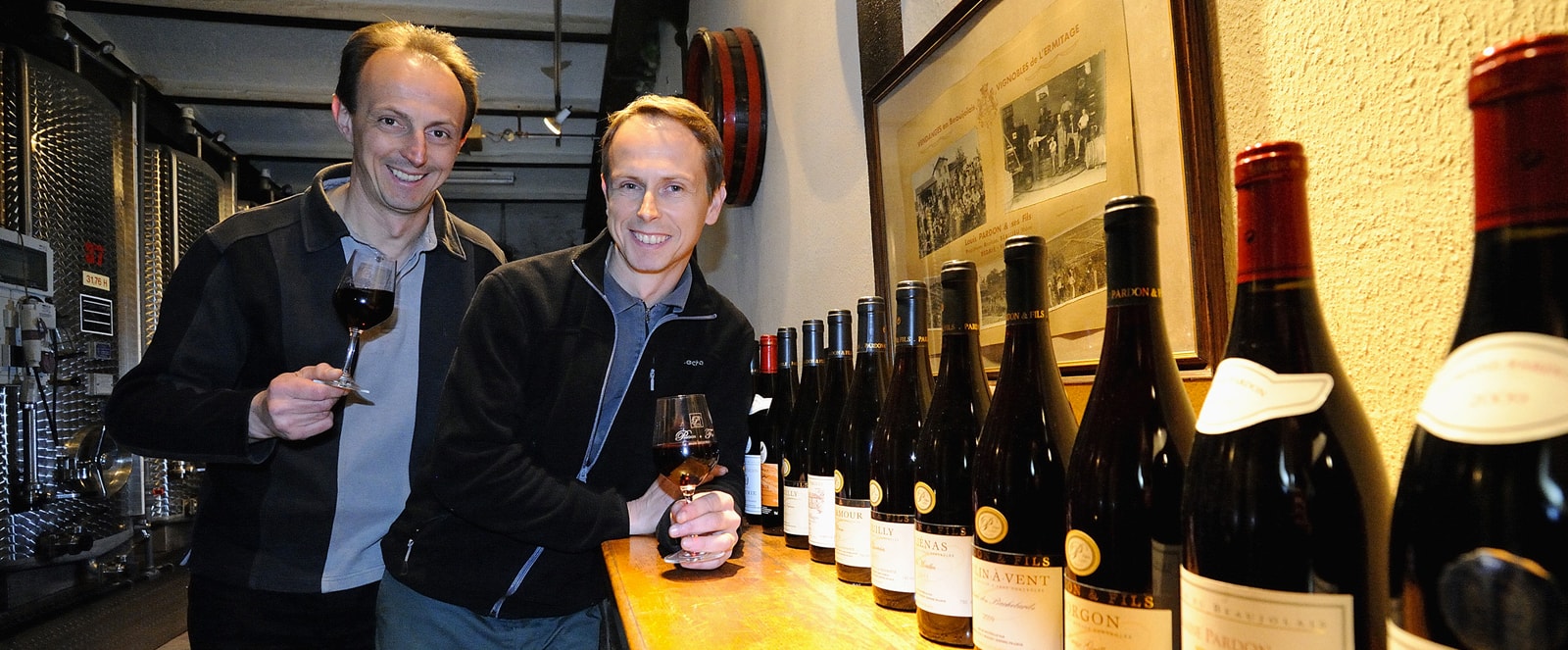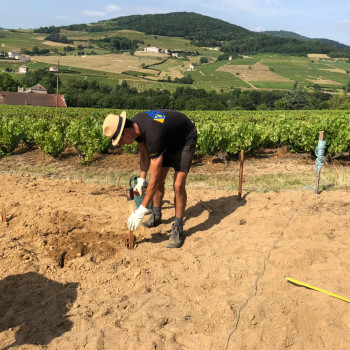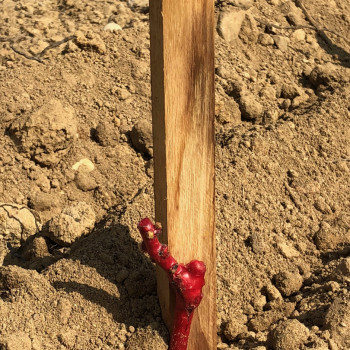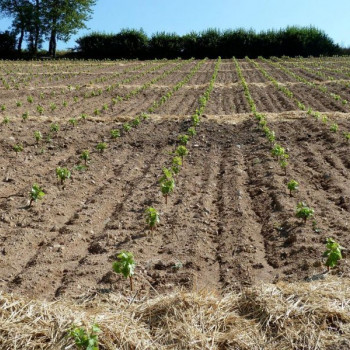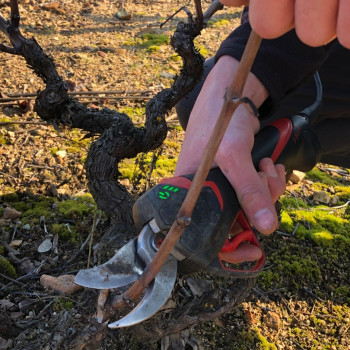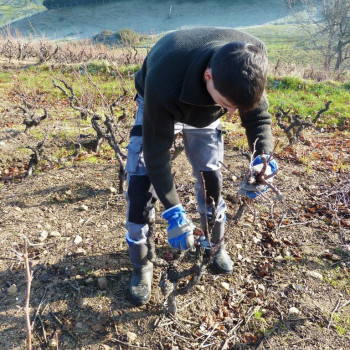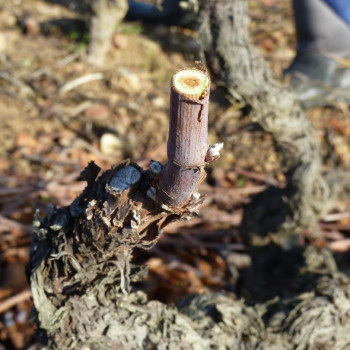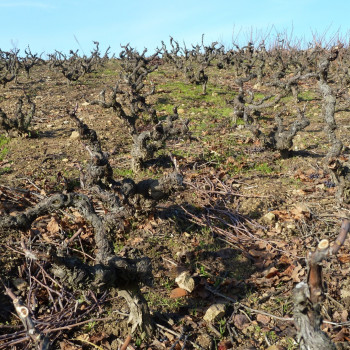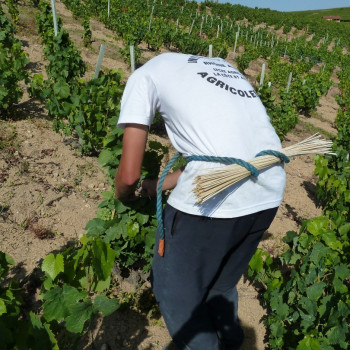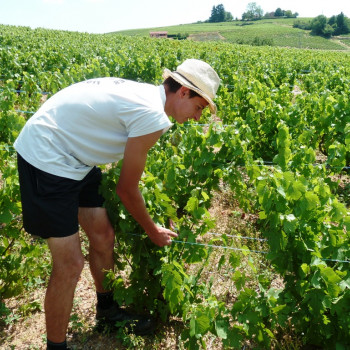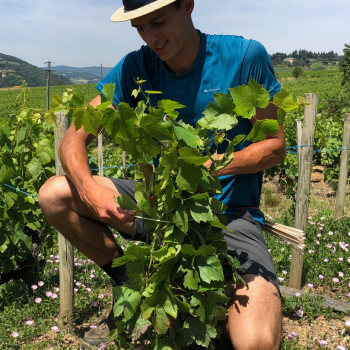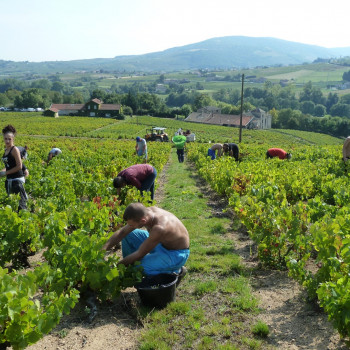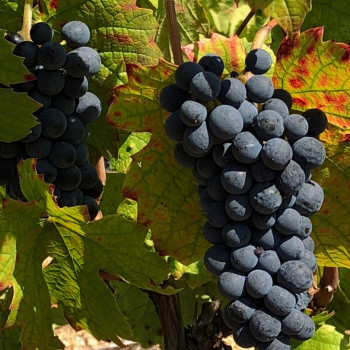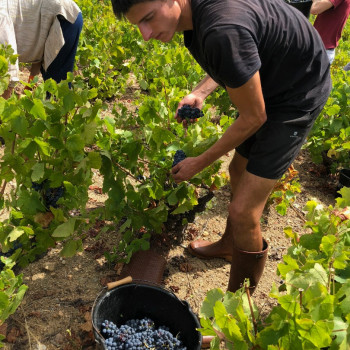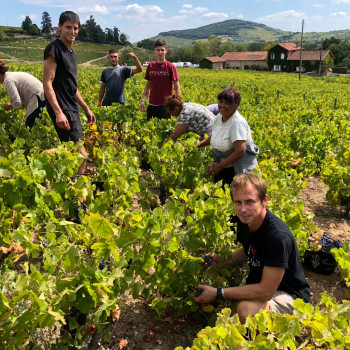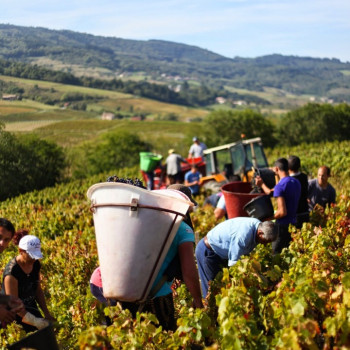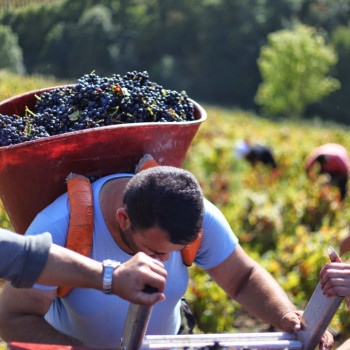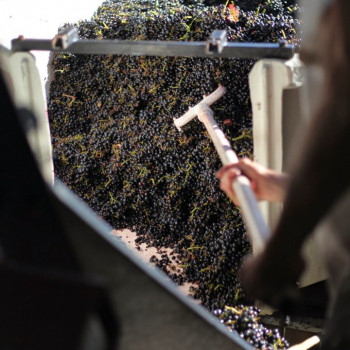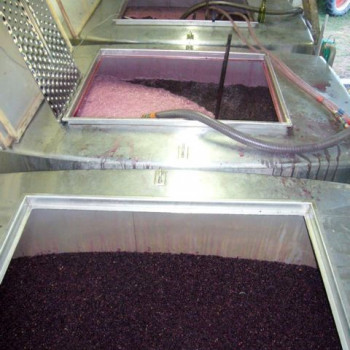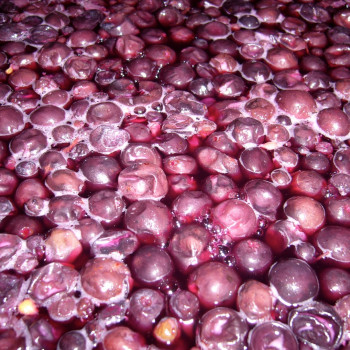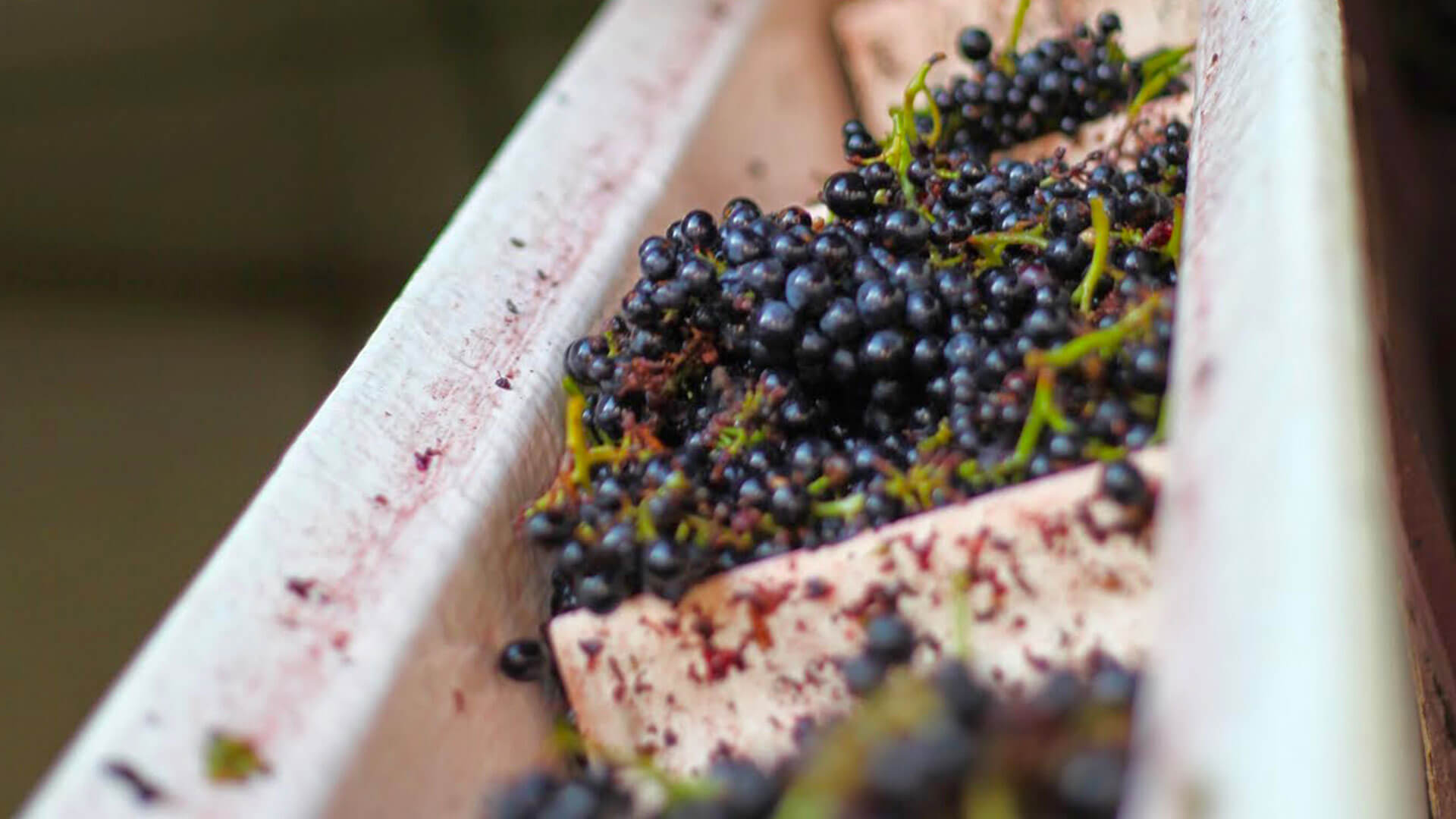
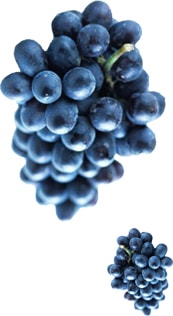
The art of making wine according to Pardon & Fils, is to pay attention and kindness to the vine and transform the grape according to traditional methods to obtain authentic and generous wines. Pardon & Fils takes particular care in cultivating its vines, through numerous works carried out throughout the year.
Steps
Plant
Pardon & fils only plants red Gamay grape à Jus Blanc, with a high density plantation of 8,000 to 10,000 feet per hectare as often in Beaujolais-Villages and
Beaujolais wines.
The culture of the vine is done in a reasoned way, which requires a monitoring
diligent from the vineyard. The winemaker must know how to identify parasites or diseases affecting the vine to treat only when necessary, thus limiting the use of products
Phytosanitary.
Prune
In winter, we practice a very short pruning called "Goblet" on the old vines.
This process limits the number of bunches per vine and makes it possible to obtain healthy grapes, whose thick skins offer better weather resistance and diseases.
For new plantations, we prune the vines using the cordon de Royat system to obtain grapes whose identical exposure gives them a homogeneous maturity.
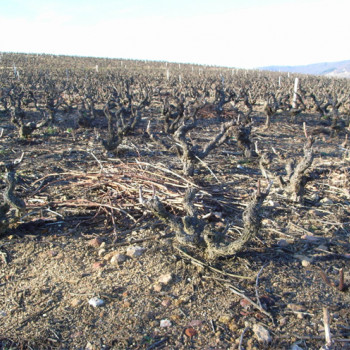
Maintain
It is during winter that we maintain the soil of our vines by adding manure and other fertilizers.
We also attach the vines on their supports by orienting the branches in a precise direction in order to improve quality and yield.

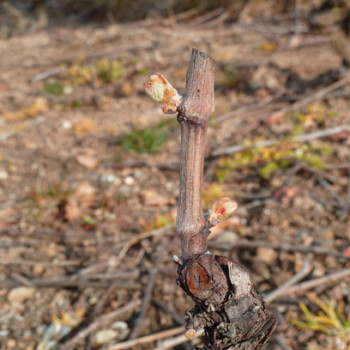

Rubb out
The budding action that takes place from mid-April to the end of May.
This consists of removing certain unwanted shoots, or too many, on the branches after the vine has buds.
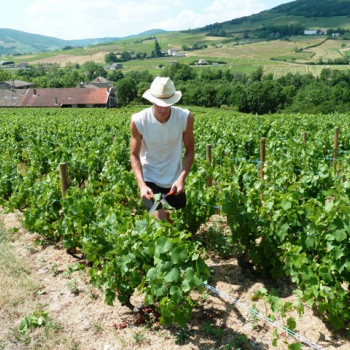

Shear
From the end of June to the end of July, we carry out 3 to 4 passages in each vineyard.
We manually chop the branches and thus concentrate the sap and nutrients in the grape berries without damaging the bunches. We do not practice mechanical trimming.
Make wine
Winemaking requires not only knowledge and technique, but also a developed sense of smell and tasting at each stage of the transformation of juice into wine.
We have three Winemaking cellars, one in Régnié Durette, the second in Fleurie and the last in Beaujeu where Eric Pardon, family oenologist, works.
Each plot is vinified separately in semi-carbonic: vatting of intact berries of grapes not crushed, producing an intracellular fermentation which accentuates the extraction of all the intense aromas of the fruit.
After a variable period of maceration depending on the wine, we press the harvest then
let all our Beaujolais and Crus du Beaujolais vintage finish their malolactic fermentation
in order to make the wines supple and pleasant on the palate.
The most important for Pardon & Fils in the development of its wines, in addition to the cleanliness of the winemaking equipment, is temperature control.
